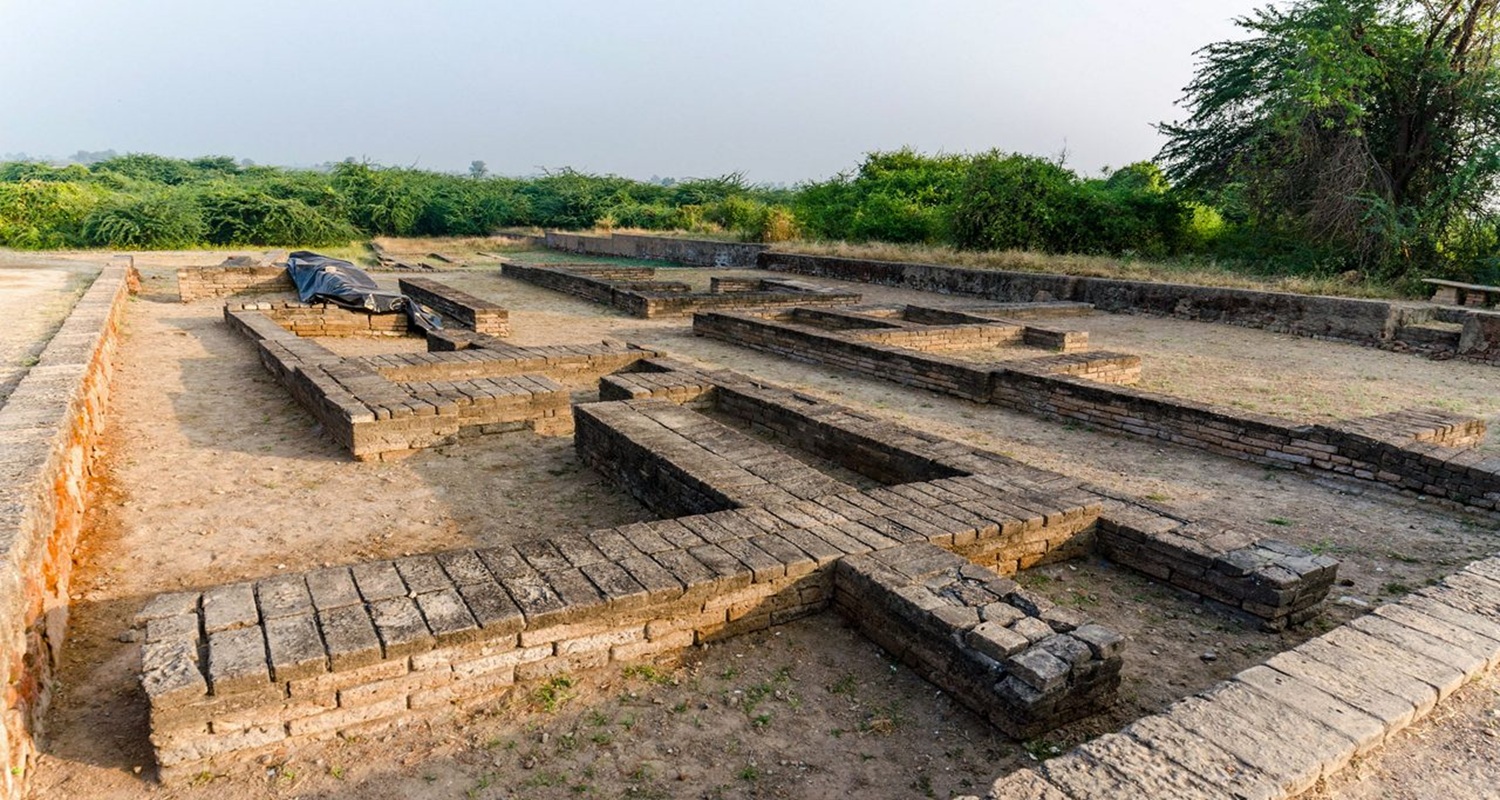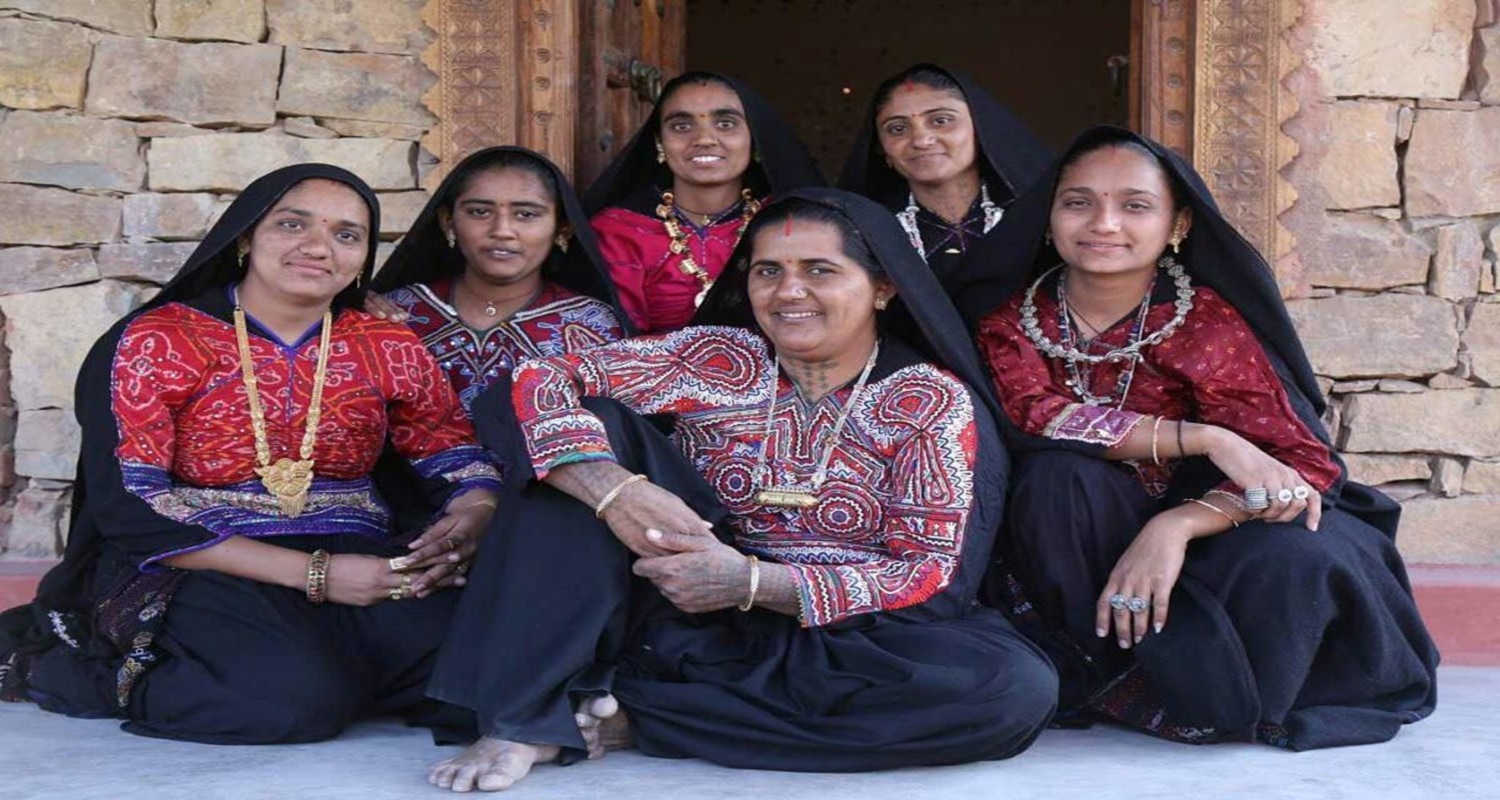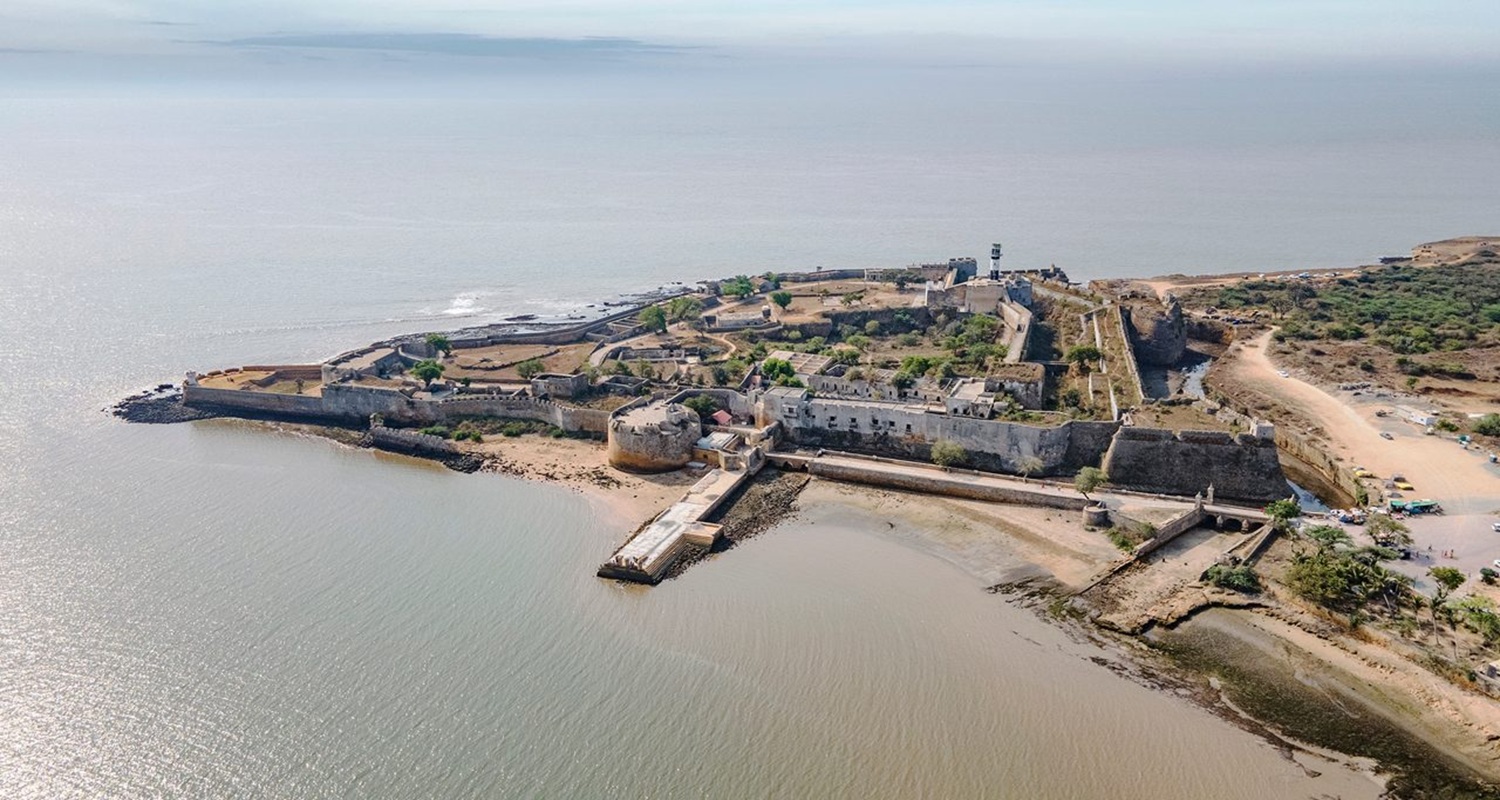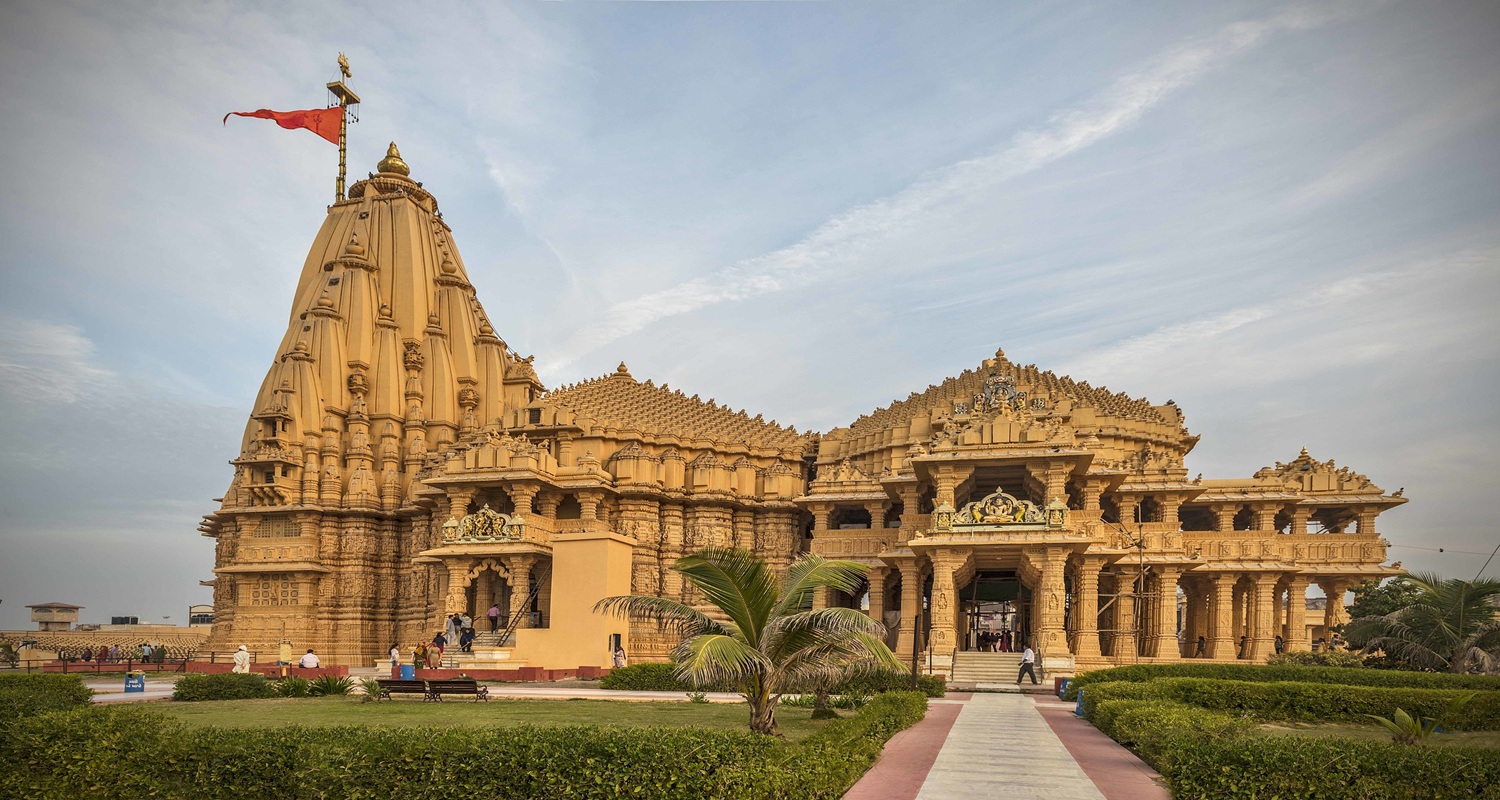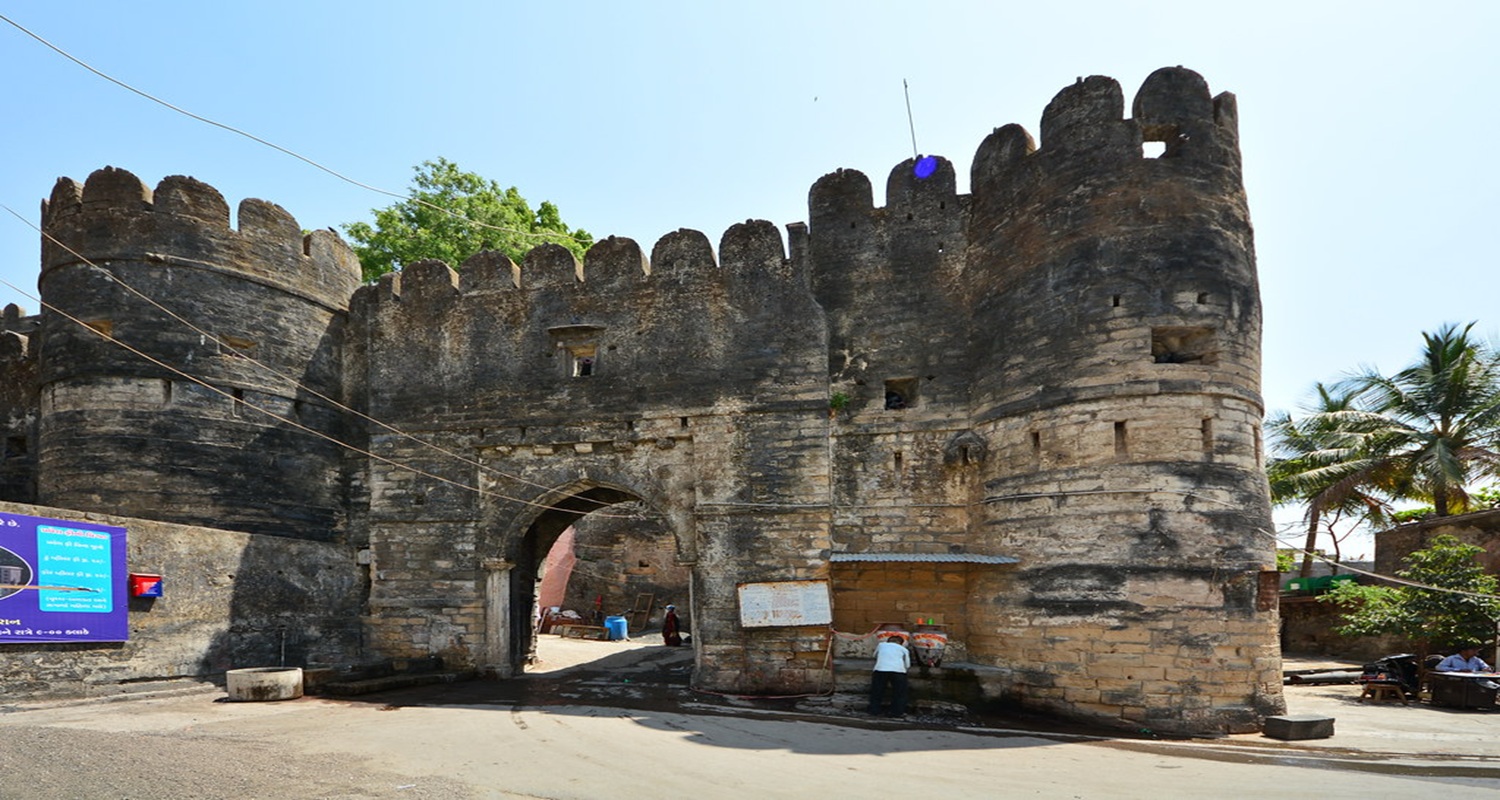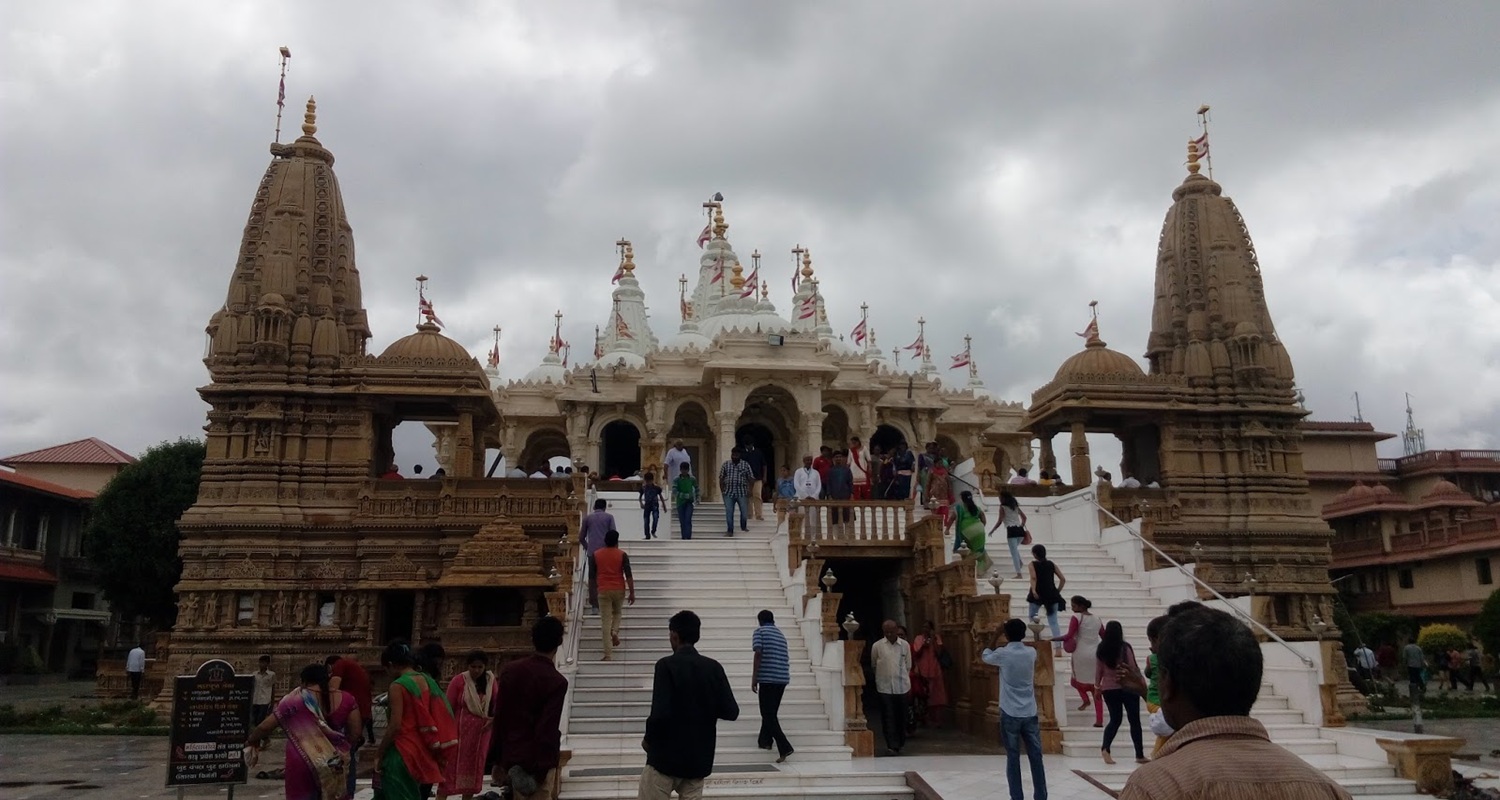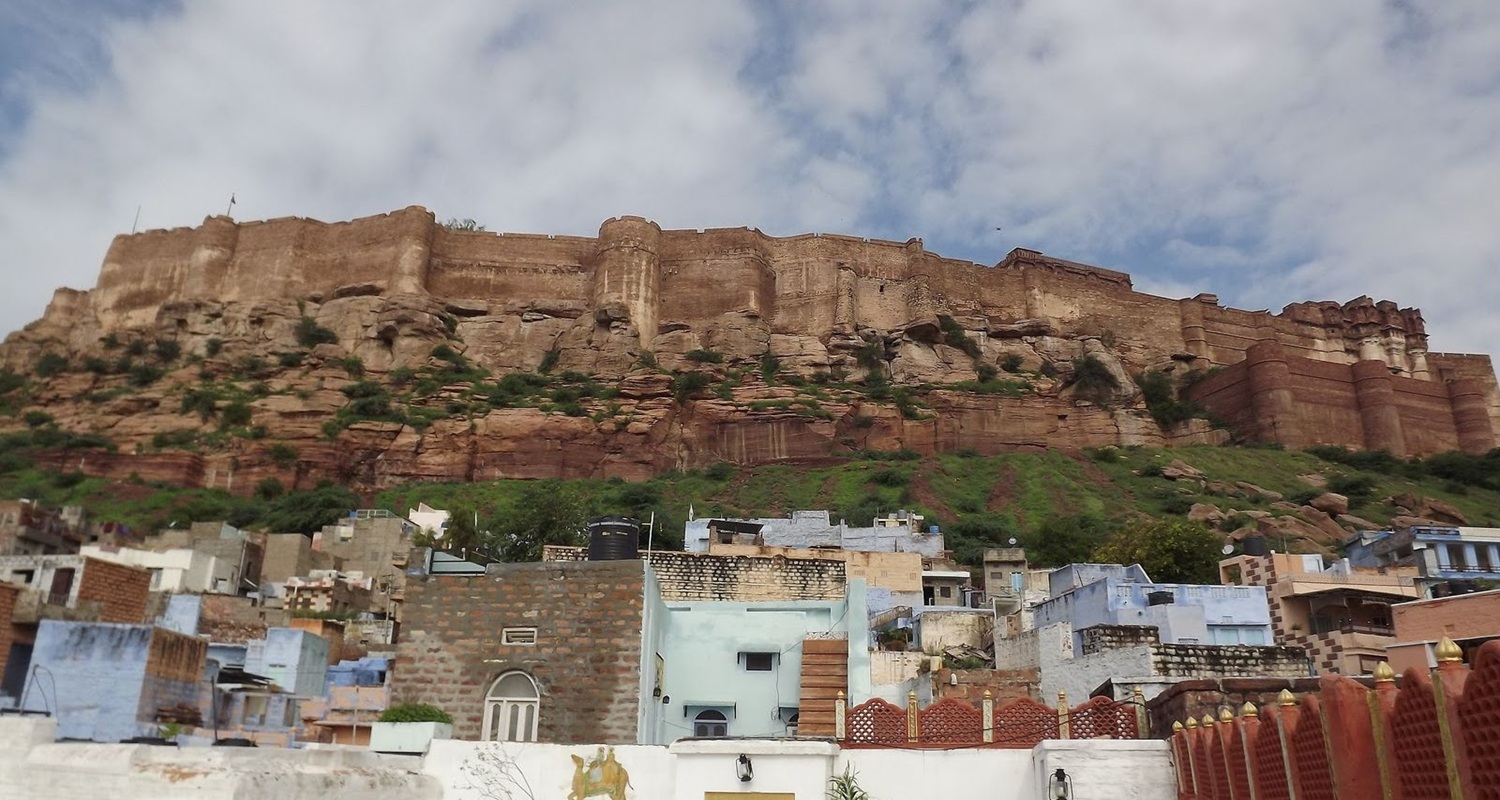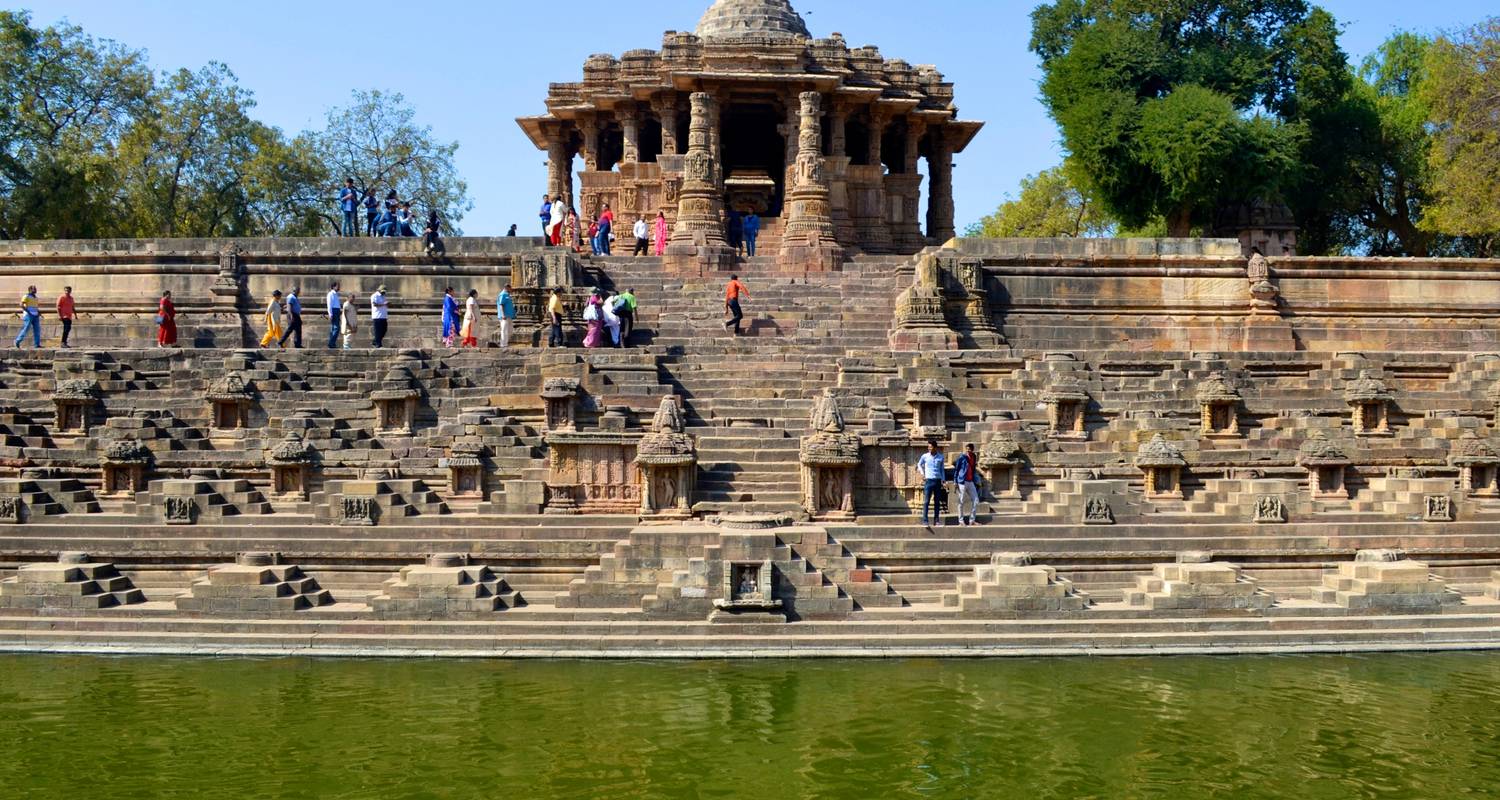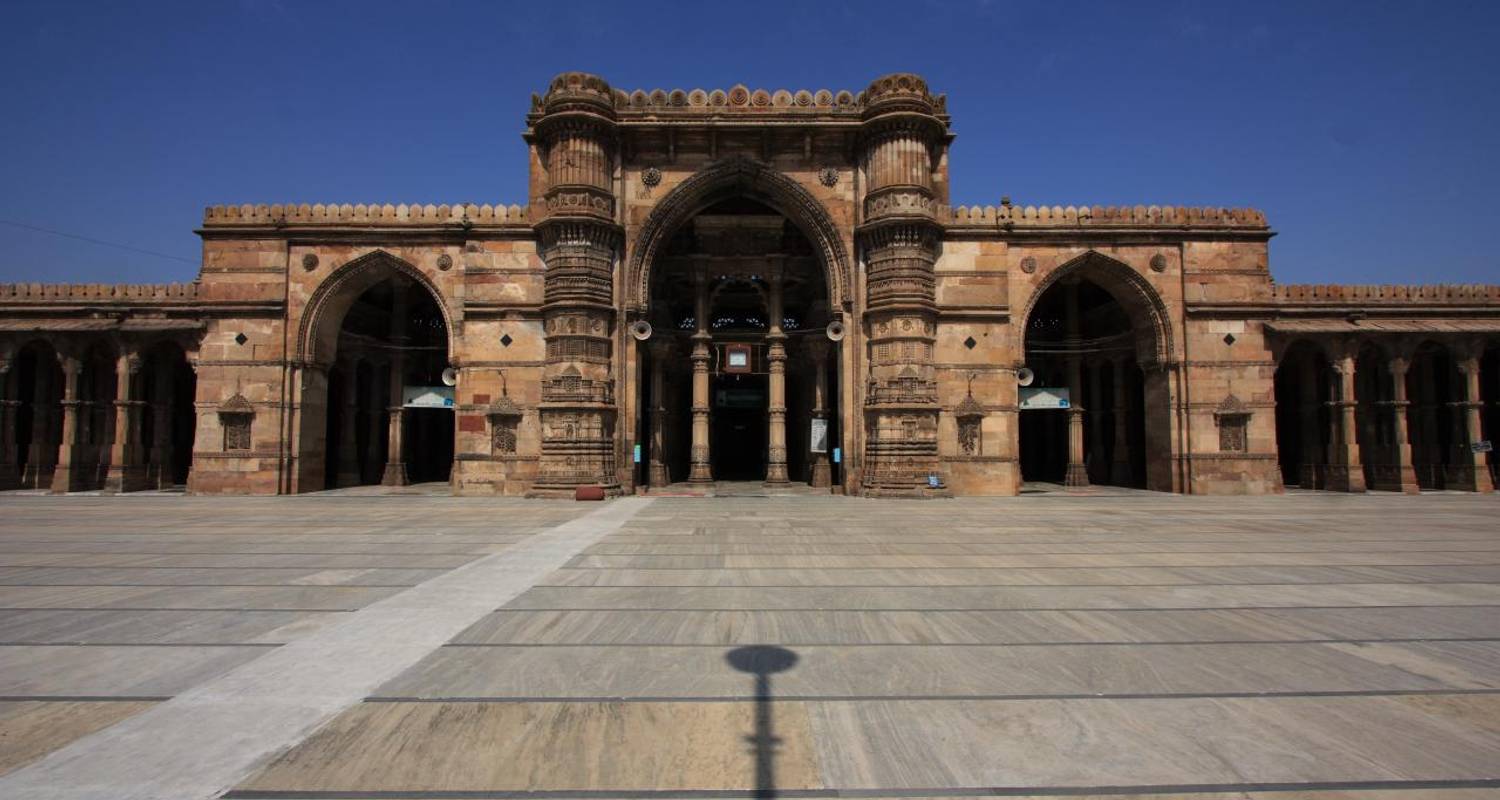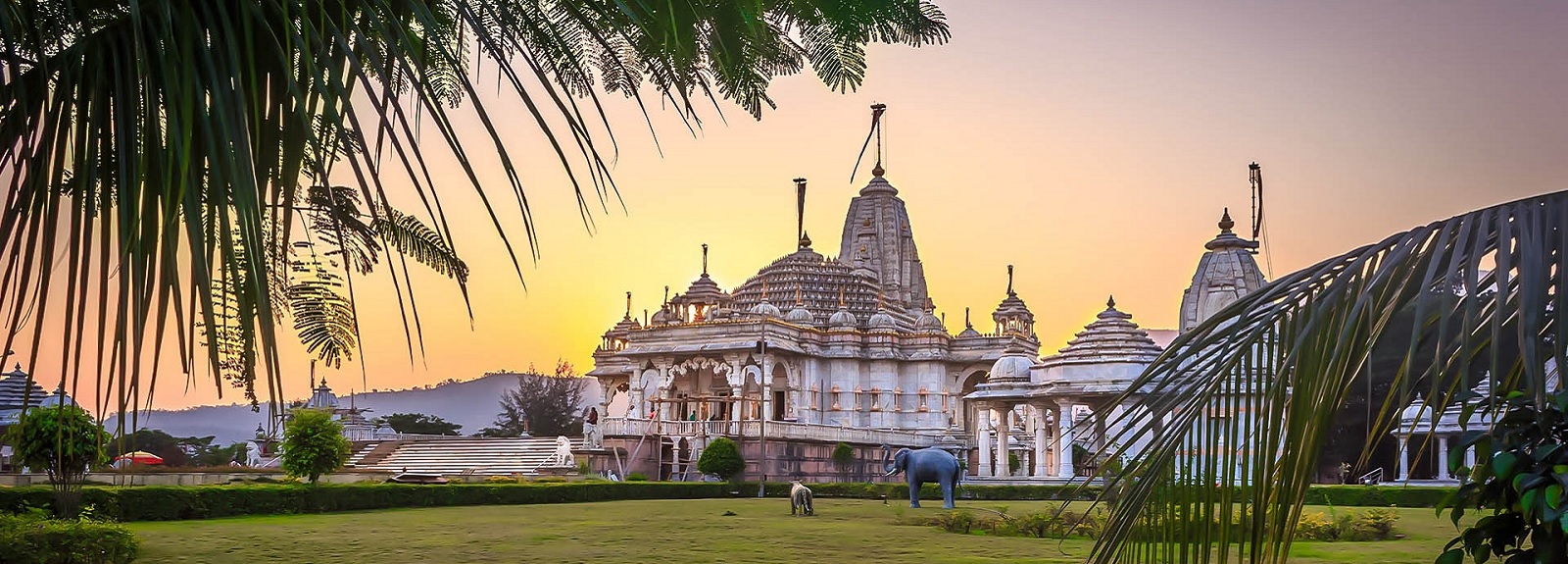
Gujrat
Vibrant Gujarat - Land of Rabari, Rann And Tribal Crafts
Included
INR 106800 Per Person
3-4 stars
Travel Duration
11 Days / 10 Nights
Included in the trip
Individual departures
Round The Year
Gujarat is a western state in India that is known for its rich cultural heritage, colourful Tribal settlements, varied geographiacal sites and religious places like Somnath, Dwarka, and Palitana. Gujrat has something to offer to everybody offer a lot. This tour us designed to give you a good introdcution to this western state. Our Tour will take to Capital city of Ahmedabad which is a melting pot of old and new traditions with old and modern buidlings. then you will be visiting the wildlife sanctuary of Dasada famous for Wild Asses. Afterwards you will be moving to the Bhuj to Experience the magic of Graet Rann of Katchh known as White Dessert, An Incredible Natural Phenomenon. here you will have a chane to Visit triabl villages and know about their lifestyle and Art n Craft. Then the tour will proceed towards the Religious sites of Somnath - A very Importanat Shiva Temple, and Palitana- An Imporatant Jain Pilgrimage Centre. You will also get a chance to see the Asiatic lion. The Tour would End with a Visit of World Heritage site of champananer along with a visit to lothal- The Pre Harappan Site. A trip to gujrat is a treat to everyone. come join us on this adventrous Trip of Lifetime.
Stages Of Tour
Day 1
ARRIVAL IN AHMEDABAD & SIGHTSEEING
Welcome to AHMEDABAD, The Capital Of state of Gujarat. Your flight would land at AHMEDABAD INTERNATIONAL AIRPORT. After landing kindly head towards the immigration department and get your passport stamped. Immigration Department would stamp the Visa on your Passport. After the Immigration and Custom check Kindly Take an Exit from the Airport.
MY TOUR ADVISOR’S Representative would be waiting for you to welcome you outside the Exit Gate. After the Meet Proceed towards the Visit of the visit of the city. You would be Covering following Monuments and activities.
AHMEDABAD
Ahmedabad, the largest city in the Indian state of Gujarat, is a vibrant blend of history, culture, and modern development. Founded in 1411 by Sultan Ahmed Shah on the banks of the Sabarmati River, the city has evolved from a medieval walled city to a thriving urban center. It holds immense historical importance, especially as the home of Mahatma Gandhi’s Sabarmati Ashram, which became a pivotal site during India’s freedom struggle. Ahmedabad was declared India’s first UNESCO World Heritage City in 2017, a recognition of its beautifully preserved old city architecture, intricate wooden houses in narrow lanes known as pols, and historic landmarks like the Jama Masjid and Sidi Saiyyed Mosque.
1. VISIT OF OLD CITY AND JAMA MASJID
The Jama Masjid in Ahmedabad is one of the most magnificent and his3torically significant mosques in India. Built in 1424 AD by Sultan Ahmed Shah, the founder of Ahmedabad, it stands in the heart of the old city near the Bhadra Fort. The mosque was originally intended for the private use of the royal family and nobles of the sultanate.
Architecturally, the Jama Masjid is a stunning blend of Indo-Islamic and Hindu styles, reflecting the craftsmanship of local artisans. The mosque is built primarily from yellow sandstone and features a vast courtyard, 15 domes, and more than 260 intricately carved columns. The prayer hall, with its beautifully detailed pillars and lattice screens (jalis), is especially impressive. The use of light and space inside the mosque creates a peaceful and spiritual atmosphere.
One of the unique features of the Jama Masjid is its incorporation of Hindu and Jain motifs, such as lotus patterns and bell-like designs, which is a result of local influence and the reuse of materials from earlier temples. This artistic fusion makes the mosque not only a place of worship but also a symbol of cultural harmony and architectural brilliance.
Adjacent to the mosque is the tomb of Sultan Ahmed Shah, along with those of his son and grandson, making the area an important heritage site. Take a stroll in the old city experiencing its colours.
2. SABARMATI ASHRAM
Sabarmati Ashram, also known as the Gandhi Ashram, is one of the most iconic and historically significant landmarks in Ahmedabad. Located on the peaceful banks of the Sabarmati River, it was established by Mahatma Gandhi in 1917 after his return from South Africa. The ashram became the center of India’s freedom movement, where Gandhi lived with his wife Kasturba and many followers, and from where he planned major campaigns of civil disobedience.
One of the most famous events associated with Sabarmati Ashram is the Dandi March or Salt Satyagraha, which began from here on 12th March 1930. Gandhi, along with 78 followers, marched over 240 km to the coastal village of Dandi to protest the British salt tax. This act of nonviolent resistance became a turning point in India’s struggle for independence.
The ashram is now a national monument and museum, preserving the simple lifestyle and powerful legacy of Mahatma Gandhi. Visitors can explore Hriday Kunj, the cottage where Gandhi lived, which still contains his personal belongings like his spinning wheel (charkha), writing desk, and letters. The museum houses photographs, letters, and exhibits that narrate Gandhi’s life, philosophy of nonviolence (ahimsa), and the independence movement.
Sabarmati Ashram is not only a place of historical importance but also a symbol of peace, simplicity, and determination. Surrounded by greenery and open spaces, it continues to inspire people from around the world who come to learn about Gandhian values and India’s freedom struggle.
Day 2
AHMEDABAD - PATAN - MODHERA– DASADA (200 Km | 4 Hrs Approx)
After breakfast drive to Dasada. On the way, stop at the ancient capital Patan and visit the marvellous step well “Rani Ki Vao”. Later stop at Modhera to visit the Sun God Temple, which represents one of the greatest masterpieces of the Hindu architecture of the Solanki period.
1. RANI KI VAO
Rani ki Vav (Queen’s Stepwell) is a spectacular stepwell located in Patan, a historic town in the northern part of Gujarat, India. It is one of the finest and most ornate stepwells in the country and was declared a UNESCO World Heritage Site in 2014 due to its exceptional architectural and cultural significance.
Rani ki Vav was built in the 11th century by Queen Udayamati, the wife of King Bhima I of the Solanki dynasty, in memory of her husband. Unlike ordinary stepwells that were primarily used for water storage, Rani ki Vav was designed as a temple-like structure and a memorial, combining both utility and beauty. It served not just as a water reservoir but also as a place for rest and reflection.
The stepwell is famous for its intricate carvings and sculptures that cover nearly every surface. The structure is built in the Maru-Gurjara architectural style, with a depth of about 27 meters and a length of 64 meters. It consists of seven levels of stairs leading down to the water, with more than 1,500 finely sculpted figures. The sculptures mostly depict Hindu deities, especially Vishnu in various forms like Kalki, Rama, Krishna, and Vamana. There are also images of apsaras (celestial dancers), sages, and scenes from mythology.
One of the most remarkable features of Rani ki Vav is how it was constructed inverted like a temple, with its sanctity increasing as one descends deeper toward the water. The stepwell was buried under silt for centuries after the Saraswati River changed its course but was rediscovered and restored by the Archaeological Survey of India.
2. MODHERA
The Sun Temple in Modhera, located in Modhera village of Mehsana district, Gujarat, is one of the most magnificent and ancient temples in India dedicated to the Sun God (Surya). Built in the early 11th century during the reign of King Bhima I of the Solanki dynasty, the temple is a masterpiece of Solanki architecture, which closely resembles the Maru-Gurjara style. The Solankis considered themselves descendants of the Sun God, and this temple reflects their devotion and architectural brilliance.
The temple complex is divided into three main parts:
1. Surya Kund (Ramakund) – A large rectangular stepped tank in front of the temple, surrounded by small shrines dedicated to various deities. Devotees used to bathe here before entering the temple for worship.
2. Sabha Mandap (Assembly Hall) – A beautifully carved pillared hall used for religious gatherings and rituals. The hall features intricate carvings on its walls, pillars, and ceiling, depicting scenes from Hindu mythology.
3. Guda Mandap (Sanctum Sanctorum) – The innermost part where the idol of the Sun God would have been enshrined (now missing). The structure is designed in such a way that during the equinoxes, the first rays of the rising sun would directly illuminate the sanctum.
The entire temple is adorned with exquisite stone carvings of gods, goddesses, celestial beings, dancers, and floral patterns. No worship is performed here today, as it is no longer an active temple, but it stands as a protected monument under the Archaeological Survey of India.
After the visit proceed towards Dasada, On Arrival at Dasada check-in to the Hotel, Overnight Stay in Dasada.
Day 3
DASADA - BHUJ (290 Km,6 hrs approx.)
Early Morning safari in Dasada Wild Ass wildlife Sanctury.
The sanctuary is home to the Indian Wild Ass, a strong and fast-moving animal known for its striking reddish-brown color and white markings. These wild asses are unique to India and have adapted well to the extreme conditions of the Rann. Apart from the wild ass, the sanctuary also hosts Desert foxes, Indian wolves, Striped hyenas, Nilgai (blue bull), Jackals, Chinkaras (Indian gazelles).
After the visit Proceed towards BHUJ. On Arrival check-in to the Hotel for overnight Stay.
BHUJ
Bhuj, a historic city in Gujarat’s Kutch district, is known for its rich heritage, vibrant culture, and traditional arts. Once the capital of the princely state of Kutch, it is home to stunning architectural landmarks like Aina Mahal, Prag Mahal, and Bhujia Fort, reflecting its royal past. Bhuj is also famous for its skilled artisans and diverse handicrafts, including Bandhani (tie-dye), Ajrakh block printing, Rogan art, and intricate embroidery created by various local communities. The city serves as the main gateway to the Great Rann of Kutch, a vast white salt desert, and hosts the famous Rann Utsav, a vibrant festivalshowcasing music, dance, crafts, and local cuisine. It is a perfect destination for those interested in history, traditional crafts, and Gujarat’s unique desert landscapes.
Day 4
EXCURSION TO GREAT RANN OF KUTCH & VISITS OF TRIBAL VILLAGES.
After Breakfast. Full day excursions to visit the great Great Rann of Kutch, one of the largest salty white deserts in the world known for its biodiversity. Along the way you can visit Villages of Rabari, Harijan tribes, Maldharis and Lohars TRIBES who have managed to protect their ancient culture and idinetity.
1. RANN OF KUTCH
The Great Rann of Kutch is one of the most extraordinary natural landscapes in India, located in the Kutch district of Gujarat, near the border with Pakistan. It is a vast white salt desert covering approximately 7,500 square kilometers, making it one of the largest salt flats in the world. The word *"Rann"* comes from the Sanskrit word Irina, meaning desert. This incredible terrain is submerged under water during the monsoon season and turns into a dry, shimmering expanse of white salt in the winter. The full moon nights are especially breathtaking, as the salt plains reflect moonlight, creating a surreal landscape.
The Great Rann is also home to wildlife sanctuaries, including nesting grounds for flamingos and migratory birds, and has deep cultural significance for local communities like the Rabari, Mutwa, and Ahir. Its unique ecosystem, stunning views, and vibrant culture make it a must-visit destination for nature lovers, photographers, and cultural explorers.
2. VISIT OF TRIBAL VILLAGES
The Rabari, Mutwa, and Ahir are traditional communities of Kutch, Gujarat, each with a distinct cultural identity, livelihood, and rich artistic heritage. These tribes have lived in harmony with the harsh desert environment of the Rann of Kutch for centuries and are known for their unique clothing, craftsmanship, and traditions.
The Rabaris are semi-nomadic pastoralists, traditionally herding camels, sheep, and goats. They are known for their distinctive dress—men often wear white dhotis and turbans, while women wear black woolen garments with heavy silver jewelry and elaborate embroidery. Rabari women are especially skilled in hand embroidery, creating intricate patterns that reflect their myths, beliefs, and daily lives.
The Mutwas are a Muslim community known for their exquisite fine embroidery work, particularly Soof and Kharek embroidery.
The Ahirs are traditionally agriculturalists and cattle herders, with roots believed to trace back to the Yadava clan associated with Lord Krishna
After the Visit return to the Hotel for check-in & Overnight Stay.
Day 5
BHUJ – RAJKOT (240 Kms – 4 Hours)
After breakfast at hotel. Transfer to Rajkot. On the way stop to see the block painting work on textiles in Dhamadka village. In the afternoon visit the Gondal Palace and Swaminarayan Temple. overnight in Rajkot.
1. GONDAL PALACE
The Naulakha Palace in Gondal also called Gondal Palace, Gujarat, is a splendid example of 18th-century royal architecture and the oldest extant palace in the region. Constructed around 1748 during the reign of Haloji Sagramji, it forms part of the Darbargadh fort complex and is renowned for its intricate stone carvings, ornate arches, and distinctive jharokha balconies. The palace's name, meaning "nine lakhs," reflects the substantial cost of its construction at the time.
Inside, the grand Durbar Hall showcases antique mirrors, gilt wooden furniture, and taxidermy displays, offering a glimpse into the opulent lifestyle of the erstwhile rulers. A private museum within the palace exhibits an eclectic collection, including silver caskets used for royal correspondence, vintage toys, and memorabilia from Maharaja Bhagwat Sinhji's reign.
After the Visit Proceed towards Rajkot. On Arrival in Rajkot visit the Swaminarayan Temple at Rajkot.
2. SWAMINARAYAN TEMPLE
The Swaminarayan temple is renowned for its intricate architecture, serene ambiance, and adherence to the teachings of Bhagwan Swaminarayan .Constructed following ancient Vastu Shastra principles, the temple features elaborately carved domes, pillars, and arches adorned with delicate designs and motifs . The temple complex includes a central shrine housing the idols of Bhagwan Swaminarayan and other deities, surrounded by beautifully landscaped gardens and pathways that enhance the spiritual experience for visitors.
After the visit return to the Hotel for Overnight Stay.
Day 6
RAJKOT – JUNAGARH – SASANGIR (160 Kms – 4 Hours)
Breakfast at the hotel and drive to Junagadh. Arrival and visit the fort and the beautiful Mausoleum of Mahabat Khan also famous as a copy of Tajmahal. After the visit procees towards SASANGIR. On Arrival in Sasangir, check in at the hotel. Afternoon, take walking tour in the Siddhi village, inhabited by tribes of African origin. overnight stay in Sasangir.
1. JUNAGRH FORT
The Junagadh Fort, more commonly referred to as Uparkot Fort, is a historic and impressive fortress located in Junagadh city, at the base of the Girnar Hills in Gujarat, India. Believed to have been originally built around 319 BCE by the Mauryan emperor Chandragupta Maurya, the fort has been rebuilt and expanded over centuries by various rulers, including the Chudasamas, the Gujarat Sultans, and the Mughals. The fort has withstood numerous sieges, some lasting years, which speaks to its strategic strength and importance.
2. TOMB OF MAHAWATKHAN
The Tomb of Mahabat Khan, also known as Mahabat Maqbara, is one of the most stunning and unique examples of Indo-Islamic and European architecture in India. Located in Junagadh, Gujarat, this 19th-century mausoleum is the burial place of Nawab Mahabat Khan II of Junagadh and his minister, Bahar-ud-dinbhai Hasainbhai.
The tomb is celebrated for its exquisite blend of Islamic, Gothic, and European styles. It features onion-shaped domes, spiraling minarets, fancy jharokhas, and French-style windows. The most iconic feature is the winding staircase around the minarets, a rare sight in Indian architecture. Intricate carvings and silver doors reflect the grandeur and craftsmanship of the Nawabi era.
Day 7
SASANGIR – SOMNATH - DIU (150 Kms – 4 Hours)
In the Morning Enjoy a jeep ride in Gir national park. It is one of India’s most renowned wildlife reserves and the only natural habitat of the endangered Asiatic lion. Spread over approximately 1,412 square kilometers of diverse terrain - including dry deciduous forests, savannahs, and scrublands, It provides a crucial sanctuary for not only the majestic Asiatic lion but also other wildlife such as leopards, deer, and numerous bird species. The Park Safari offers visitors a thrilling opportunity to observe lions in their natural environment.
After the safari proceed toward Somnath and visit famous temple of Somnath. Afterwards Proceed to Diu and visit the Diu Fort. After the visit check-in to the Hotel, Overnight Stay in DIU.
1. SOMNATH TEMPLE
The Somnath Temple, is one of the most sacred and historically significant temples in India. Dedicated to Lord Shiva, it is considered the first of the twelve Jyotirlingas, which are highly revered shrines of Shiva across the country. The temple’s origins trace back to ancient times, and it has been mentioned in texts as early as the Rigveda. Over the centuries, Somnath Temple was destroyed and rebuilt multiple times due to repeated invasions, most notably by Mahmud of Ghazni in the 11th century. Despite the destruction, it was rebuilt each time, symbolizing the unwavering faith and resilience of the people. The present structure, completed in 1951 under the initiative of Sardar Vallabhbhai Patel, is built in the Chaulukya style of architecture. Facing the Arabian Sea, the temple offers a serene and majestic setting, making it not only a place of worship but also a symbol of India’s enduring spiritual and cultural legacy.
2. DIU FORT
The Diu Fort, located on the western coast of India in the Union Territory of Diu, is a grand 16th-century structure built by the Portuguese during their colonial rule. Constructed between 1535 and 1541, the fort was a result of a strategic alliance between the Sultan of Gujarat and the Portuguese, aimed at defending the region against Mughal invasions. Over time, the Portuguese seized full control and transformed Diu into an important maritime outpost. The fort served as a stronghold for the Portuguese until 1961, when Diu was integrated into India.
Day 8
DIU - BHAVNAGAR (200 Km, 5 hrs approx)
DIU - BHAVNAGAR (200 Km, 5 hrs approx)
DIU is a serene coastal town and a Union Territory of India, located on the western coast near Gujarat, along the Arabian Sea. Known for its Portuguese colonial heritage, sun-kissed beaches, and laid-back atmosphere, Diu offers a unique blend of history, culture, and natural beauty. Unlike the bustling nearby cities, Diu is peaceful and charming, making it a perfect escape for travelers seeking relaxation and exploration.
Morning at Leisure to stroll at beaches or Relax at the hotel.
In the afternoon transfer to Bhavnagar. On Arrival at Bhavnagar check-in at the Hotel. Overnight In Bhavnagar.
Day 9
BHAVNAGAR – EXCURSION TO PALITANA
Breakfast at hotel. Full day dedicated for the excursion to Palitana to visit one of the most important Jain pilgrimage centre with its eight hundred temples located on the sacred hill of satrunjaya. Return to Bhavnagar. Overnight Stay at Bhavnagar.
1. PALITANA TEMPLES
The Palitana Temples, located on Shatrunjaya Hill near Bhavnagar in Gujarat, are among the most sacred pilgrimage sites for Jains. This complex consists of over 900 exquisitely carved marble temples, making it one of the largest temple complexes in the world. The site is particularly sacred to followers of the Svetambara sect of Jainism and is considered the place where Adinath (Rishabhanatha)—the first Jain Tirthankara—attained enlightenment.
To reach the temples, pilgrims must climb approximately 3,800 stone steps up the hill, as no vehicles are allowed, and even monks and devotees go barefoot. The climb is a spiritual journey in itself, undertaken as a form of penance and devotion. The temples, built over several centuries—mainly from the 11th century onwards—feature intricate marble carvings, delicately sculpted domes, and ornate spires, showcasing the finest aspects of Jain temple architecture.
The site is completely non-commercial and vegetarian, in keeping with Jain principles. No food is allowed to be consumed on the hill, and the entire town of Palitana is legally declared a vegetarian zone, making it unique in the world.
A visit to Palitana offers not just a glimpse into the spiritual depth of Jainism, but also a chance to admire the aesthetic brilliance of Indian temple architecture, all set against a backdrop of peaceful hills and scenic views.
Day 10
BHAVNAGAR – LOTHAL – CHAMPANER (200 Km – 6 Hours)
Breakfast at hotel. Drive to Champaner, stopping along the way to visit Lothal, an archeological site related to the Indus valley Civilisation. Continue to Champaner, ancient capital of Gujarat now declared as world heritage monument by UNESCO. Check-in to the hotel. Overnight at Champaner.
1. LOTHAL
Lothal is one of the most important and well-preserved archaeological sites of the Indus Valley Civilization, It was a thriving city known for its advanced urban planning, trade networks, and especially its remarkable dockyard, which is considered one of the world’s earliest known.
This ancient city served as a major port and trading hub, connecting the Harappan civilization with regions as far as Mesopotamia. The dockyard, built along the Bhogava River, shows incredible engineering skills and was used for the berthing of ships, proving the Harappans’ maritime expertise. Excavations have also revealed a well-planned grid of streets, brick houses, a sophisticated drainage system, bead-making workshops, and artifacts such as pottery, tools, seals, and semi-precious stones.
2. CHAMPANER
Champaner, located in the Panchmahal district of Gujarat, is a UNESCO World Heritage Site known for its remarkable fusion of Hindu and Islamic architecture, ancient urban planning, and rich historical layers. Nestled at the foot of Pavagadh Hill, Champaner was once a thriving capital established by Sultan Mahmud Begada in the 15th century after he conquered the region and shifted his court there from Ahmedabad. The city, however, was later abandoned, which helped preserve its incredible architectural and archaeological heritage.
The most notable landmark in the area is the Champaner Pavagadh Archaeological Park, which spreads across the old city and hill. It features a wealth of mosques, temples, stepwells (vavs), fortifications, palaces, and residential structures. One of the most famous monuments is the Jama Masjid, built in 1513 CE, renowned for its blend of Indo-Islamic design with delicate jali work, intricately carved pillars, and symmetrical minarets.
Above the town, on Pavagadh Hill, lies the sacred Kalikamata Temple, a major Hindu pilgrimage site attracting devotees year-round. The temple, believed to be one of the Shakti Peethas, is accessible via a combination of steps and ropeway and offers sweeping views of the surrounding landscape.
What makes Champaner truly special is that it offers a frozen glimpse into a Pre-Mughal Islamic city, untouched by modern development. It is a rare site where you can walk through ancient streets and explore centuries old structures that retain much of their original character.
Day 11
CHAMPANER– AHMEDABAD (200 KM, 5-6 HRS Approx.)
Breakfast at the hotel and visit the nearby tribal villages of Rathwa and Dhanka tribes. They decorate their houses walls with tribal paintings and live inside the forests.
After the Visits transfer to Ahmedabad. Arrive and transfer to the International airport to catch the flight for your onward Destinations.
1. RATHWA AND DHANKA TRIBES
The Rathwa and Dhanka are indigenous tribal communities primarily found in the eastern regions of Gujarat, especially in districts like Chhota Udepur, Panchmahal, and parts of Vadodara. The Rathwas are especially known for their vibrant and sacred Pithora paintings, colorful murals made on the walls of their homes to honor deities and mark auspicious occasions. These paintings are a vital part of their cultural and spiritual life, reflecting their deep connection with nature and ancestral beliefs. The Dhanka tribe, traditionally associated with forest living, hunting, and later agriculture, shares a similar reverence for nature and community-centric traditions. Both tribes follow a blend of animist beliefs and folk customs, celebrating festivals with music, dance, and rituals that have been passed down through generations. While modern influences are slowly entering their lives, both communities continue to preserve their unique identity, art, and traditions, representing a rich and colorful part of Gujarat’s tribal heritage.
END OF THE SERVICES
The hotels
My Tour Advisor Provides a wide variety of hotels
Cost Per Person For Different Categories
| # | No of Pax | Standard | Superior | Prestige |
|---|---|---|---|---|
| 1 | 2 Pax | INR 106800 | INR 118000 | INR 138000 |
| 2 | 4 Pax | INR 96000 | INR 106000 | INR 124000 |
| 3 | 6 Pax | INR 90800 | INR 100000 | INR 117000 |
| 4 | 8 Pax | INR 85000 | INR 94500 | INR 110400 |
| 5 | 10 Pax | INR 80000 | INR 88600 | INR 103000 |
Supplements
| # | Plan | Standard | Superior | Prestige |
|---|---|---|---|---|
| 1 | Single Supplement | INR 64000 | INR 70900 | INR 82800 |
| 2 | Half Board | INR 4000 | INR 8000 | INR 12000 |
| 3 | Full Board | INR 8000 | INR 16000 | INR 24000 |
| 4 | Christmas Supplement | INR 26700 | INR 29500 | INR 34500 |
| # | Months | Dates 1 | Dates 2 |
|---|
Inclusions
- Accommodation on twin sharing basis in the selected category hotels as per the itinerary.
- Transfers and sightseeing as per the itinerary by vehicle with AC on private basis.
- Local English-Speaking guides as per the sightseeing.
- Monument Entrances as per the program.
- Jeep Safari in little Rann of Kutch.
- Shared Jeep Safari at Gir National Park.
- Local assistance.
- Two bottles of water per person per day.
- Local taxes, parking, tolls and driver expenses.
- Travel Kit (travel documents, mask, hand sanitizer).
- All Taxes & GST
Exclusions
- International flights and visas.
- Travel insurance.
- Tips and personal expenses.
- Additional visits or extra use of vehicles.
- Anything not mentioned in the inclusions.
TOUR HIGHLIGHTS
In accordance to the COVID 19 pandemic all our tours are operated with all precautionary measures including SANITIZED CARS/COMPLIMENTARY SANITIZERS/MASKS (Your safety is our priority)
• All Inclusive Tour. – Hotels / Transport / Guides / Monument Fees.
- Visit of Wildlife sanctuary on Jeep in Dasada.
- Sun temple at modhera
- Step well - Rani ki bao
- Great Rann of Kutch
- Gir National Park
- Somnath temple
- Palitana Jain shrine
- Loatha Dockyard.
- Historic Site of Champaner.
Enquiry Form
Please fill the below form for more information
PASSPORT
A valid passport is required for at least six months before Boarding the Flight. We encourage you to check the validity of the passport and we advise you to bring a photocopy of your passport and the page of the visa obtained, or carry multiple copies of ETA, useful in case of loss.
INDIAN CONSULAR VISA
To enter India, an entry visa issued by the Indian Embassy is required. It is categorically necessary that all travellers, whose itinerary includes leaving and returning to the country, have obtained a double or multiple visas. During the flight to India you will be given a disembarkation form to be filled in with your data and to be delivered to passport control. The detachable part completed with the customs declaration will be returned to you, and must then be handed over to the customs upon leaving the airport.
INTERNAL FLIGHTS
Air tickets for flights within India or between India and Nepal, if not included in the intercontinental flight, will be collected by your companion or our representative and will be delivered to you upon arrival. Flights within India and between Nepal are the trickiest part of the journey. We recommend a lot of patience, because it is not uncommon for flights to suffer delays, cancellations or make intermediate stops not foreseen at the time of booking. It is therefore essential to always go to the airport on time (about 2 hours before the flight). In the event of cancellations, however, the companies, according to the new regulations, will refund the cost of the ticket but have no obligation to re-route. The rebooking will then be done by our local office by purchasing a new ticket. Purchasing it on the same day, the same fare as the canceled flight is not always available. In case this exceeds that of the cancelled flight, the difference must be paid directly on the spot. If there are no other flights on the scheduled route, a land transfer by car/bus will be provided in lieu of the ticket.
DOMESTIC FLIGHTS BAGGAGE ALLOWANCE
Since recently (August 2013) both on intercontinental flights and on internal flights, the companies are very strict in calculating the weight of the baggage and each additional kilogram is subjected to an extra payment according to the rules of the company itself. In this regard, we report the scheme concerning the baggage allowance for the economy class granted by each airline for flights within India and between India and Nepal:
Airline
Hand Baggage Weight
Checkin Luggage Weight
Air India
7 kg + Laptop
15 kg
Jet Airways
7 kg + Laptop
15 kg
Indigo & Spice Jet
7 kg + Laptop
15 kg
Go Air
7 kg + Laptop
15 kg
Jet Lite
7 kg + Laptop
15 kg
The company has the right to apply an extra cost for each kilogram exceeding the above, (indicatively from 4 to 8-euro per kg).
LOCAL GUIDES AND ESCORT TOURS
For the entire duration of the group tour, starting from your arrival in India, you will be assisted by a Tour Escort or local Guide (for individual tourists) in each city who will take care of every technical-organizational detail. The tour escort will also act as a local guide in the cities for which he is licensed. In the others he will be accompanied by a local foreign speaking guide or English-speaking guide as per the provisions of the Indian government. In the latter case, he will provide for the translation.
In many cities of India, in fact, there are no local guides speaking foreign languages (especially in southern India, central India and some parts of Rajasthan), or there are few.
THEFT
We remind you that passport, telephone and valuable accessories in general must always be kept by the passenger and never left unattended, as no service facility takes charge of any loss/theft during the tour. It is also good to have all the emergency bank numbers with you in case of need.
TIPS
In India, tipping is a custom rooted in local custom. The amount of tips is at the discretion of the passengers, but as a rule they are in the local custom. In restaurants it is customary to leave 10% of the bill as a tip.
A basic tip:
For half day drive with driver Rs. 300/ full day Rs. 500.
For porters Rs. 70 per bag
For Half Day Local Guide Rs. 500/ Full Day Rs. 800
Per Day Escorts Rs. 1000
(The amount is in total and refers to a group of 2/3 people, it can be increased if you are traveling in a group with more people)
For groups, even small in number but with tour escorts, it is advisable to give the guide a sum at the beginning of the tour (approximately 40/45 euros for 7/9 day tours) and he will distribute them appropriately, thus avoiding boring and continuous collections.
N.B. (This figure does not include a possible tip for the companion)
ROOM AVAILABILITY
The rooms are available until 12.00 on the day of departure. In India there is no day use system, therefore if the rooms want to be kept until departure they will have to be paid for the entire following night.
CHECK-IN ONLINE
We inform you that the check-in procedure can take place via online check-in, which can be implemented from the airlines' websites or via the automatic check-in devices specifically installed at the airport.
CLIMATE
The most pleasant season runs from mid-November to March, with moderate heat and low rainfall. The maximum temperatures vary from 27° to 30°, the minimums from 16° to 22°. In March the temperatures begin to rise with highs reaching 38°. The month of August records the peak of the monsoon season (from June to October) which invests the south-western regions with rainfall that varies in intensity according to the areas, limited in some to severe thunderstorms. In October and in the first half of November the south-eastern part of India is affected by a north-east monsoon.
CLOTHING
Clothing must take into account the period and the regions where you go. In southern India, light clothing can be worn all year round, without forgetting long trousers and long-sleeved shirts to protect against insects. During visits to the temples, excessively small clothing should be avoided. For those traveling to the northern regions, warmer clothing is needed, as the temperature can approach freezing in winter. In the desert region of Rajasthan the temperature varies a lot between day and night.
SHOPPING
In India the variety of handicraft production is practically infinite. Indian muslins, canvases, silks and brocades have enjoyed worldwide fame since ancient times and have been appreciated for the quality of the fabric, the beauty and resistance of the colors, the originality of the designs. Even today the brightly colored silk saris, embroidered or woven with gold or silver threads, the brocades of Varanasi as well as the cottons of Rajasthan, the wool or wool and silk carpets of Kashmir and Uttar Pradesh are renowned. The manufacture of fabrics is just one aspect of the varied and rich Indian craftsmanship which ranges from wood carving (teak, sandalwood, rosewood, ebony) spread almost everywhere, especially in Karnataka, to Agra marble inlays or the stone sculptures of Orissa, from ceramics to hand-painted lacquers, from brass and copper pottery to bamboo and leather objects. The skill of the Indians in the cutting and processing of semi-precious and precious stones has been known since ancient times. Haggling in the bazaars is common practice.
Do not buy souvenirs that cost animals their lives or harm nature.
FOOD AND DRINK
It is recommended to drink only bottled or boiled water (found in almost all restaurants and hotels). Carefully avoid tap water and ice in drinks. It is advisable to consume only well-cooked foods and packaged foods, avoiding raw vegetables and fruit that cannot be peeled.
MEDICAL ASSISTANCE
In India there is a great variety of doctors practicing the most diverse forms of therapy and the only hospital in Europe is located in Delhi. It is advisable to bring from Italy tablets against any gastrointestinal disorders and medicines that are difficult to find locally.
BEHAVIOUR
Before entering the temples, mosques and or gurdwaras it is essential to take off your shoes, generally it is allowed to keep your socks on. To avoid discomfort, do not bring leather articles of any kind with you, because they could arouse some opposition. Inside places of worship, tourists can move as they please and sometimes attend religious rites, for which it is preferable to wear modest clothes, avoiding tops, skirts and shorts. A small donation will be welcome.
The folded hands namaste is the typical Indian greeting and its use will be greatly appreciated. Especially in cities, men will gladly shake hands with tourists; in fact, this gesture is considered particularly cordial. The majority of Indian women, on the other hand, are reluctant to shake hands with a man, both Indian and foreign (a possible refusal should not be considered an offense) and are generally surprised by the informality of relations between the two sexes used in western countries. In private homes you will be welcomed as guests of honor and your lack of familiarity with local customs and traditions will be understood and accepted. If you should be tempted to eat with your fingers, remember to use onlyyour right hand.
GASTRONOMY
Indian cuisine varies according to the regions, with notable differences between the southern and northern regions, but has as a common feature the wise use of spices which are used not only to flavor foods but also to aid digestion. In the north it looks remarkably like that of Middle Eastern or Central Asian countries; there is great use of chili (hot pepper), the staple food is wheat, and various types of unleavened bread are consumed, such as pooris or chappatis. The meats are quite common, naturally not beef. In the south, where the Muslim influence has been less strong, vegetarian diets prevail, and the cuisine revolves around rice, consumed in an infinite variety of ways. The highly savory taste of Indian foods is related to the blend of spices frequently used in food preparation. These mixtures (kari) can accompany various vegetables, chicken or lamb meat, fish or rice. Rogan josh (lamb curry), gishtaba (spiced meatballs with yoghurt), korna (vegetable meat-based stews) are very common in the north. In the south, various vegetable dishes are widespread, including bhujia (a vegetable curry) and along the coasts, fish dishes, the Cochin prawns are delicious. Perhaps the most common dishes throughout India are, however, the simple dhal, essentially a lentil soup, and the thali, the typical vegetarian dish, usually served on a tray with small bowls full of vegetables accompanied by large -of quantity of rice. Among the desserts, kulfi, the typical pistachio ice cream, is very common, while tropical fruit is very abundant. It is a frequent habit to conclude the meal by chewing pal, a mixture of spices, betel nuts and other powders, all wrapped up in an edible leaf. Tea is the most popular drink and some varieties of Indian tea are famous all over the world. Try the rice beer.
LANGUAGE
In India a large number of local languages are spoken, very different from region to region, among which Hindi is the official one. English represents a strong instrument of national cohesion and is very widespread, especially in hotels or in places frequented by Westerners.
RELIGION
Religion forms an integral part of India's complex tradition. Four of the most important faiths in the world meet on this territory: Hinduism, Buddhism, Christianity and Islam and among these the first two were born in India. furthermore, this country which welcomed the Jews and the Parsees (followers of Zoroaster), who then integrated into Indian life, gave rise to Jainism, Sikhism and other innumerable cults and regional sects of lesser importance and which for centuries have acted and interacted with each other.
AIRPORT FEES
They usually already include exit taxes from the country. However, we recommend checking at the airport, as these are subject to change regulations.
PHONE
The cellular network is active in the country, however Italian cell phones are only active in the main cities and it is therefore advisable to purchase a card locally. To call from India the area code is 0039. To call India dial 0091.
VACCINATIONS
No mandatory vaccination is required for travelers from Italy. Before travelling, it is advisable to consult the competent ASL on the need to carry out vaccinations or appropriate prophylaxis. In general, subject to medical opinion, vaccinations against: diphtheria, hepatitis A and B, typhoid, tuberculosis, polio and tetanus booster are recommended. However, we recommend checking the Viaggiare Sicuri website at the link http://www.viaggiaresicuri.it/index.php?india
CURRENCY
The legal tender in India is the Indian Rupee. It is advisable to have currency in US dollars especially for entrances, Euros are also welcome. No Indian currency can be brought into the country or exported, while any amount of foreign currency can be imported. It is very complicated to exchange the Rupee in another currency, so it is advisable to buy in such quantities as to no longer have liquids in local currency at the time of departure. Credit cards, preferably from the VISA circuit, are accepted both in authorized shops and in hotels in large cities, where automated bank branches can also be used.
Our Staff
Our guides and professional escorts have experience in the area and in-depth cultural preparation. We can provide Guides in differenr languages also in most of the sectors but in some areas there shall be only english speaking Guides available, Such as Ladakh and the Himalayan areas, Kindly do check it with our travel experts regarding the availabiluty.
Means of transport
Our organization boasts a large fleet of new generation air-conditioned means of transport: from standard or deluxe cars (2/3 pax) to Overland vehicles (2/3 pax); from minibuses (4/8 pax) to grand tour buses (10/40 pax), with professional English speaking drivers, always attentive to the needs of travelers. The roads that connect the main cities of India are generally good. Indian Traffic conditions limit the transfer times to an average of 50 km per hour.
Hotels and tented camps
In Indian Subcontinent, the official category of hotels does not guarantee international standards and does not always correspond to the expectations of the traveler. The structures that MTA chooses, from luxury hotels, to Heritage Hotels (former residences of the Maharajas), to lower category hotels, are periodically supervised by our staff. In the Himalayan areas of Ladakh, hotels are provided among the best existing and standard tented camps with limited comfort, where a good spirit of adaptation is required.
Flights
The Major airports where International flights Land are Delhi, Mumbai, Chennai, Kolkata, Bangalore, Hyderabad, Almost all of the major International Airliens have theor scheduled flights from these cities. including Swiss, Emirates, Qatar Airways, Turkish Airlines, BrusselsAirlines and Etihad.
Personalized trips
Our Product Managers are available to travelers to develop personalized itineraries (for individuals or groups) and offer ad hoc programming, designed with maximum flexibility and with smallest details, for those who want to immerse themselves in the magic and spirituality of " Land of the Gods” outside the classic Itineraries or with programs already present in the catalog. MTA is also available to develop personalized travels in cinema, nature, sports, honeymoons, incentive travel, business tourism and medical tourism in India.
India Visa
To obtain an entry visa to India it is essential to have a passport valid for 6 months from the date of travel (with at least three consecutive free pages), and two passport photos. you can apply for ETA (Electronic Travel Authorization) The Link of the website is https://indianvisaonline.gov.in/evisa/tvoa Kindly check for permission Granted on ETA before boarding your flight.
